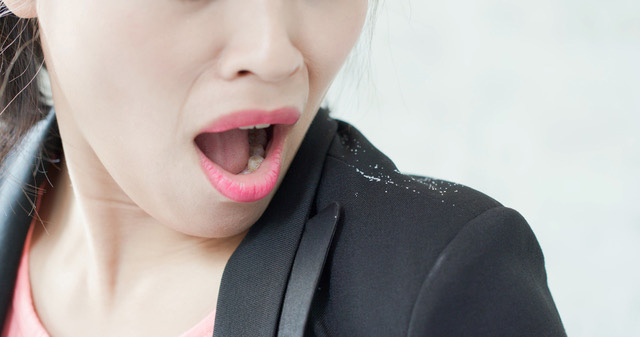What Is Seborrheic Dermatitis? Causes, Symptoms & Treatments Explained
If you’ve noticed itching, flaking, or redness on your scalp or face, you may be dealing with seborrheic dermatitis. This common skin and scalp condition affects millions worldwide and is often confused with dandruff or psoriasis. At Freedom Clinic Toronto, we specialize in trichology and scalp health, helping people manage seborrheic dermatitis with evidence-based treatments and professional guidance.
In this beginner-friendly guide, we’ll explain what seborrheic dermatitis is, what causes it, the most common symptoms, and how to treat it effectively.
What Is Seborrheic Dermatitis?
Seborrheic dermatitis is a chronic inflammatory scalp condition that causes redness, greasy patches, itching, and flaky skin. It commonly appears on the scalp, eyebrows, sides of the nose, beard, and behind the ears.
While it’s often mistaken for regular dandruff, seborrheic dermatitis is more persistent and can be harder to control without the right medicated shampoos and scalp treatments.

Symptoms of Seborrheic Dermatitis
Seborrheic dermatitis symptoms can vary from person to person, but the most common include:
- White or yellowish flakes on the scalp or in the hair
- Red, greasy patches on the scalp, face, or upper chest
- Itchy, irritated skin that worsens with scratching
- Flakes that resemble severe dandruff and fall on clothing
- Inflammation that may lead to temporary hair shedding
If you’re noticing persistent dandruff that doesn’t improve with regular shampoo, it may actually be seborrheic dermatitis.
What Causes Seborrheic Dermatitis?
The exact cause isn’t fully known, but several triggers play a role:
- Yeast (Malassezia) Overgrowth – A natural skin yeast that can overgrow and cause irritation.
- Excess Oil Production – Oily skin creates the perfect environment for flare-ups.
- Genetic Factors – Some people are simply more prone to scalp conditions.
- Stress & Hormones – Stress, fatigue, and hormonal changes often worsen symptoms.
- Seasonal Changes – Cold, dry winters in Toronto often trigger flare-ups.
Who Gets Seborrheic Dermatitis?
Seborrheic dermatitis can affect anyone, but it’s most common in:
- Infants, where it’s called cradle cap
- Adults between 30–60 years old
- People with oily skin or weakened immune systems
Seborrheic Dermatitis vs. Dandruff
Many people confuse dandruff with seborrheic dermatitis. Here’s the difference:
- Dandruff: Mild scalp flaking without redness or significant irritation.
- Seborrheic Dermatitis: Flaking plus redness, itching, and greasy patches.
If drugstore anti-dandruff shampoos don’t improve your condition, you may need a medicated shampoo for seborrheic dermatitis.
Treatments for Seborrheic Dermatitis
The good news: seborrheic dermatitis can be controlled with consistent treatment.
1. Medicated Shampoos
- Look for shampoos with ketoconazole, 2% zinc pyrithione, selenium sulfide, salicylic acid, or coal tar.
- At Freedom Clinic Toronto, we recommend and supply our own Freedom Medicated Shampoo, specifically formulated to soothe scalp irritation, control flaking, and restore balance.
2. Topical Creams & Lotions
- Prescription antifungal or steroid creams may be recommended for stubborn flare-ups, especially on the face or body.
3. Scalp & Skincare Routine
- Use gentle, non-irritating cleansers.
- Avoid harsh styling products with alcohol that dry out the scalp.
- Wash regularly, but don’t over-strip natural oils.
4. Lifestyle Adjustments
- Reduce stress — a known trigger for flare-ups.
- Eat a balanced diet rich in omega-3 fatty acids and vitamins to support skin health.
- Use a humidifier in dry Toronto winters to prevent skin dehydration.
Can Seborrheic Dermatitis Cause Hair Loss?
While seborrheic dermatitis doesn’t cause permanent baldness, inflammation, itching, and scratching can lead to temporary hair shedding or thinning. By treating the scalp with medicated shampoo, trichology treatments, and proper scalp care, hair growth usually returns to normal.
When to See a Specialist
If your scalp condition doesn’t improve with over-the-counter dandruff shampoos, or if you’re experiencing severe itching, redness, or hair loss, it’s best to see a trichologist or dermatologist.
At Freedom Clinic Toronto, our team specializes in scalp analysis and evidence-based hair loss treatments. We can design a personalized plan that includes professional-grade medicated shampoos, topical treatments, laser therapy, and trichology care.
Shop Medicated Shampoo in Toronto
The Freedom Medicated Shampoo is available exclusively through The Freedom Store, owned by Freedom Clinic Toronto. You can purchase it in-clinic or order online at TheFreedomStore.ca for fast, convenient delivery across Canada.
Final Thoughts
Seborrheic dermatitis is common and manageable with the right treatment plan. Using medicated shampoo, soothing scalp care products, and expert guidance, you can keep symptoms under control and maintain a healthier scalp — which means healthier hair.
If you’re struggling with seborrheic dermatitis, dandruff, or scalp irritation in Toronto, the specialists at Freedom Clinic Toronto are here to help. Book a consultation or explore our range of medical-grade scalp care products online today.
